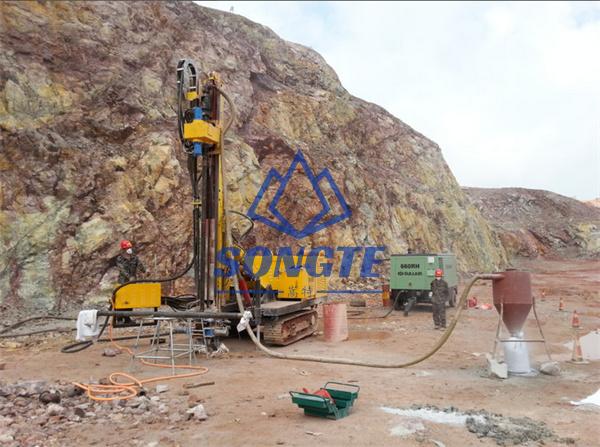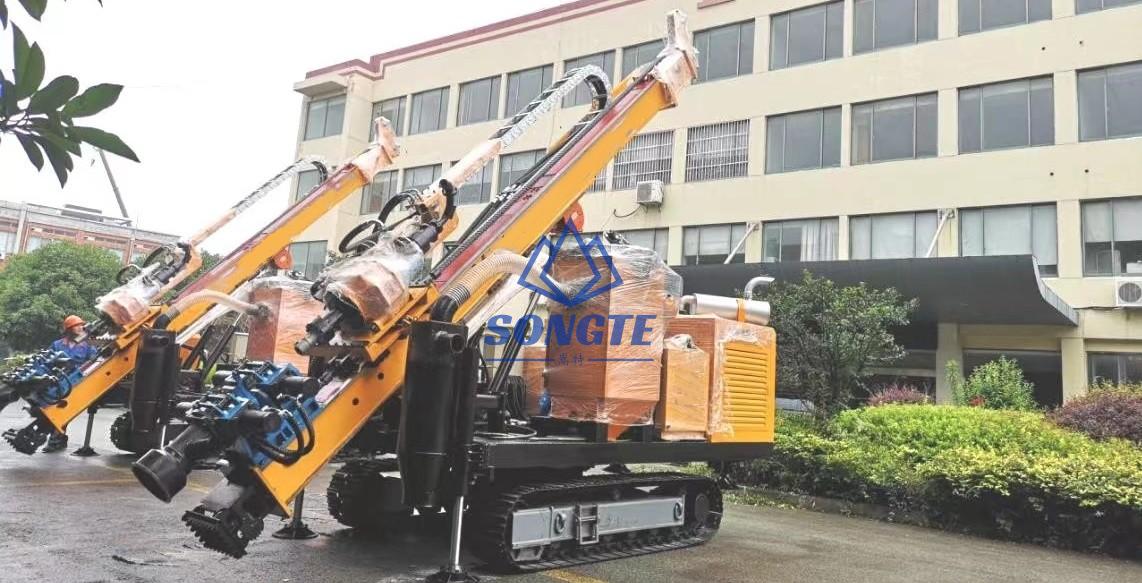Exploration de l’efficacité et des applications des appareils de forage RC: Une vue d’ensemble complète
Introduction:
Appareils de forage RC, également connu sous le nom d’appareils de forage à circulation inverse, have transformed the mining and exploration industries with their efficient and reliable drilling capabilities. These rigs play a vital role in mineral exploration and extraction, as well as in the oil and gas sector. Dans cet article, nous plongerons dans le monde des plates-formes de forage RC, exploring their technology, methods, advantages, and various applications, including mineral exploration and oil and gas drilling. We will also discuss the importance of drilling depth and the significance of RC drilling samples.
Plate-forme de forage hydraulique multifonctionnelle RC pour la collecte d’échantillons de coupe

RC Drilling Rig Technology:
RC drilling rigs are equipped with advanced technology designed to maximize drilling efficiency and accuracy. The rigs feature robust drill bits, powerful engines, and specialized equipment for reverse circulation drilling. The technology involved ensures efficient sample retrieval and allows for real-time data monitoring.
RC Drilling Methods:
There are several methods used in RC drilling, including dual tube and single tube systems. The dual tube method uses inner and outer tubes to collect drilling samples, while the single tube method uses a single tube with check valves to separate cuttings and sample materials. Both methods have their advantages depending on the specific drilling requirements.
Advantages of RC Drilling:
RC drilling offers numerous advantages over other drilling techniques. These include faster drilling rates, better sample recovery, reduced waste material, and minimal environmental impact. The reverse circulation method allows for efficient sample collection and provides valuable geological information for analysis.
Applications in Mineral Exploration:
RC drilling rigs are extensively used in mineral exploration projects. They play a crucial role in identifying and evaluating mineral deposits. RC drilling allows for precise sampling of rock formations, helping geologists and mining companies make informed decisions about the feasibility and potential of mineral resources.
Applications in Oil and Gas Drilling:
RC drilling rigs are also employed in the oil and gas industry for various drilling applications. They can be used in exploration drilling to identify potential oil and gas reservoirs and in production drilling for well completion and maintenance. RC drilling provides valuable geological information for reservoir characterization and optimization.
Importance of RC Drilling Depth:
The drilling depth of an RC drilling rig is a crucial factor in determining its capabilities. Deeper drilling requires rigs with higher power and efficiency. The ability to reach greater depths allows for exploration in challenging terrains and enables access to untapped resources.
Significance of RC Drilling Samples:
The collection of high-quality RC drilling samples is vital for accurate analysis and assessment of mineral deposits or hydrocarbon reservoirs. These samples provide valuable information about the geological structure, mineral composition, and fluid content, aiding in resource evaluation and decision-making processes.
Plate-forme de forage hydraulique multifonctionnelle RC pour la collecte d’échantillons de coupe

Conclusion:
RC drilling rigs have revolutionized the mining and oil and gas industries with their efficiency, exactitude, et polyvalence. With advanced technology, efficient drilling methods, and the ability to reach significant depths, these rigs have become essential tools in mineral exploration and oil and gas drilling. The advantages of RC drilling, including improved sample recovery and reduced environmental impact, make it a preferred choice for industry professionals. By utilizing RC drilling rigs, companies can obtain crucial geological information to make informed decisions and maximize the potential of their projects.
 Songtemachine
Songtemachine
